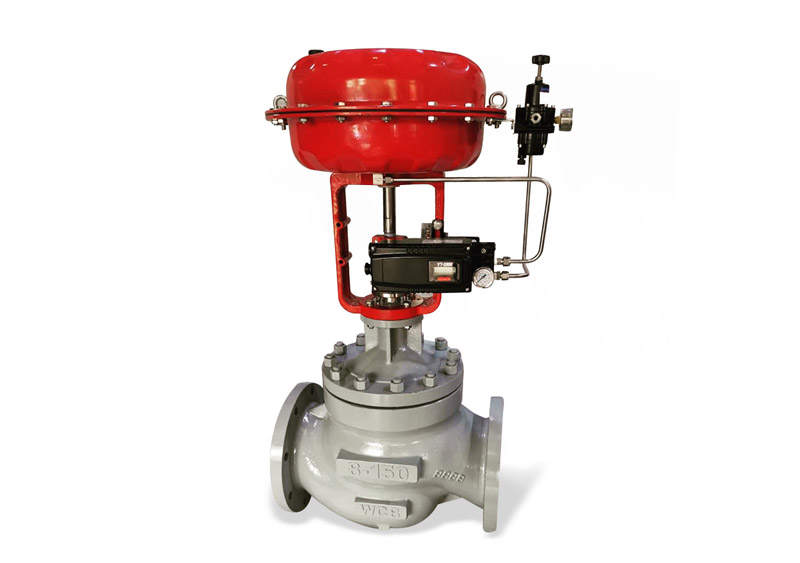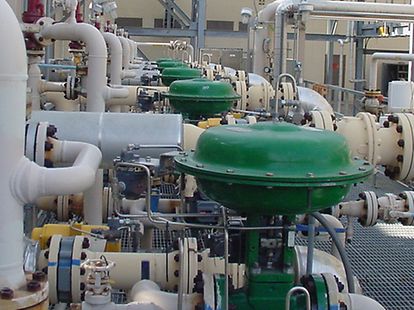Understanding the Significance of Control Valves in Process Automation
Understanding the Significance of Control Valves in Process Automation
Blog Article

Maximize Energy Savings and Convenience With Advanced Structure Automation Controls
In the realm of modern architecture and facility monitoring, the assimilation of sophisticated building automation regulates stands as an essential improvement. The convergence of modern technology and sustainability has actually birthed a new period where energy performance, comfort optimization, and operational streamlining are no more possible truths but remote desires. By using the power of automation, buildings can adjust, react, and progress in manner ins which were when inconceivable. The potential for considerable energy cost savings and improved comfort is not just a pledge yet a possibility waiting to be met. This paradigm change in building administration holds the vital to unlocking a globe where ecological conscientiousness and resident wellness sympathetically exist together within the walls of our structures.
Power Efficiency Advantages
Energy efficiency advantages can considerably decrease energy consumption and operational costs in buildings. Energy-efficient systems, such as sophisticated building automation controls, can optimize the use of resources like lighting, air conditioning, and heating, leading to reduced energy expenditures over time.
In addition, improved energy effectiveness can extend the life expectancy of structure tools and systems. By operating more efficiently, a/c systems, lighting components, and other structure elements experience much less damage, leading to decreased upkeep and replacement prices. Furthermore, energy-efficient structures commonly command greater building values and rental prices, offering lasting financial advantages to proprietors.
Additionally, power efficiency can improve occupant comfort and performance. Properly controlled indoor atmospheres with optimum lights and thermal conditions develop an even more pleasurable and helpful work space, resulting in enhanced staff member complete satisfaction and efficiency. Overall, the energy effectiveness advantages linked with sophisticated building automation controls are diverse, incorporating cost savings, environmental stewardship, and passenger health.
Boosted Convenience Control
Enhancing convenience control in structure atmospheres requires a sophisticated assimilation of sophisticated automation systems for ideal resident well-being. By making use of sophisticated building automation controls, facilities can customize the indoor environment to fulfill the certain requirements and preferences of owners. control valves.
By integrating these sophisticated controls, buildings can not only boost comfort however also boost energy performance by optimizing system operations based on real tenancy and use patterns. Eventually, focusing on owner comfort via sophisticated automation systems leads to an extra pleasurable and much healthier interior environment.
Functional Effectiveness Improvements

In addition, the implementation of real-time tracking and analytics devices enables building drivers to determine energy inadequacies and operational abnormalities promptly. By constantly keeping track of power use patterns and system performance metrics, modifications can be made in real-time to enhance power intake and ensure peak operational effectiveness. control valves. In addition, incorporating demand reaction methods right into structure automation controls can better enhance operational effectiveness by dynamically changing energy usage based upon grid problems and rates signals
Indoor Environment Optimization
Efficient interior environment optimization is a basic facet of structure automation controls, ensuring residents' comfort and well-being while maximizing energy savings. By utilizing advanced sensing units and controls, constructing automation systems can continually monitor and adjust temperature level, moisture degrees, air high quality, and air flow to produce an ideal indoor atmosphere. Maintaining comfortable and regular conditions not only enhances resident contentment but also increases efficiency and total wellness.
Indoor environment optimization additionally plays a vital duty in power efficiency. By fine-tuning cooling, ventilation, and heating systems based on real-time data and occupancy patterns, developing automation controls can considerably reduce power intake - control valves. Applying methods such as demand-controlled ventilation and thermal zoning can assist minimize power waste while guaranteeing that each location of the building gets the necessary conditioning.

Lasting Setting Production
Structure automation regulates not just enhance indoor climate problems for power effectiveness and passenger comfort but additionally lay the structure for producing a sustainable environment via critical administration of systems and resources. By integrating innovative structure automation innovations, such as sensing units, actuators, see post and smart software program, centers can keep an eye on and change power use in real-time to lessen waste and decrease their carbon footprint. These systems allow anticipating upkeep, determining prospective issues prior to they intensify and maximizing tools performance to enhance durability and efficiency.
Moreover, lasting environment production extends past energy monitoring to include water preservation, waste reduction, and interior air quality renovation. Building automation controls can manage water usage, identify leaks, and guarantee proper waste disposal techniques, contributing to total sustainability efforts. Furthermore, by regulating and keeping track of air flow and purification systems, these innovations boost resident health and wellness and performance while decreasing power intake related to a/c procedures.
Conclusion
Finally, progressed structure automation controls offer substantial advantages in terms of energy financial savings, convenience control, operational efficiency, indoor environment optimization, and developing a sustainable atmosphere. By applying these controls, structures can achieve ideal efficiency while decreasing power intake and enhancing owner convenience. It appears that making use of sophisticated automation technology see this website is critical in improving building performance and developing a more sustainable future.
Power effectiveness benefits can substantially reduce power usage and operational expenses in structures. In general, the energy performance advantages linked with innovative structure automation controls are complex, encompassing expense financial savings, ecological stewardship, and passenger wellness.
In addition, including demand response strategies right into building automation controls can further boost operational efficiency by dynamically readjusting energy use based on grid problems and pricing signals.
Structure automation manages not link only maximize indoor environment problems for energy performance and passenger comfort but additionally lay the structure for creating a lasting atmosphere through critical management of sources and systems.In verdict, advanced structure automation controls deal significant advantages in terms of energy financial savings, comfort control, functional efficiency, interior climate optimization, and producing a sustainable atmosphere.
Report this page